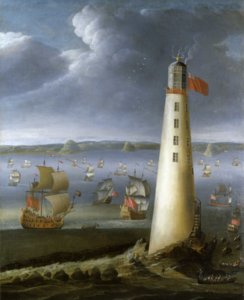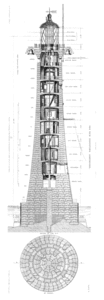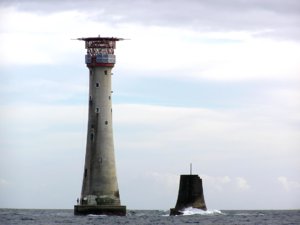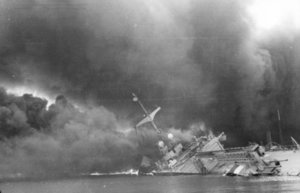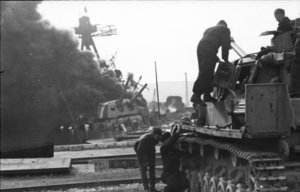Today in Naval History - Naval / Maritime Events in History
17th of November
please use the following link and you will find the details and all events of this day ..... in the following you will find some of the events
1743 – Launch of French Tonnant, 80-guns at Toulon, design by François Coulomb the Younger
Tonnant was an 80-gun ship of the line of the French Navy. She was the flagship of the French fleet at the Second battle of Cape Finisterre, and later took part in the Battle of Quiberon Bay, and in the American War of Independence. She was broken up in 1780.

1800 - Boats of HMS Captain (74), HMS Magicienne (32), HMS Nile (12) and HMS Suwarrow (10) destroyed French corvette Reolaise (20) in Port Navalo
On 17 November, Captain Sir Richard Strachan in Captain chased a French convoy in to the Morbihan where it sheltered under the protection of shore batteries and the 20-gun corvette Réolaise. Lieutenant Argles skillful maneuvered Nile, as the first British vessel up, and kept the corvette from the north shore. Magicienne was then able to force the corvette onto the shore at Port Navale, though she got off again. The hired armed cutter Suworow then towed in four boats with Lieutenant Hennah of Captain and a cutting-out party of seamen and marines. Nile and the hired armed cutter Lurcher towed in four more boats from Magicienne. Although the cutting-out party landed under heavy fire of grape and musketry, it was able to set the corvette on fire; shortly thereafter she blew up. Only one British seaman, a crewman from Suworow, was killed; seven men from Captain were wounded. However, Suworow's sails and rigging were so badly cut up that Captain had to tow her. Nile captured a merchant vessel that was then burnt.

1804 – Launch of French Achille, a Téméraire-class 74-gun French ship of the line built at Rochefort in 1803 after plans by Jacques-Noël Sané


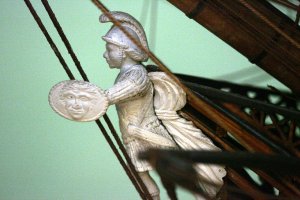
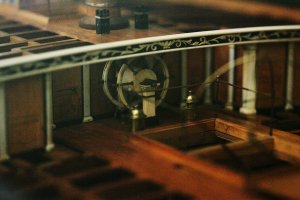
A 1⁄33 scale model is on display in Paris at the Musée de la Marine.
1804 – Launch of HMS Hibernia, 110 gun first rate ship of the line
HMS Hibernia was a 110-gun first-rate ship of the line of the Royal Navy. She was launched at Plymouth dockyard on 17 November 1804, and was the only ship built to her draught, designed by Sir John Henslow.

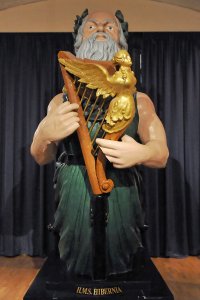
Figurehead of the HMS Hibernia (1804).
1863 - The screw sloop USS Monongahela escorts Army troops and covers their landing on Mustang Island, Texas while her Sailors shell Confederate works until the defenders surrender.
USS Monongahela (1862) was a barkentine–rigged screw sloop-of-war that served in the Union Navy during the American Civil War. Her task was to participate in the Union blockade of the Confederate States of America. Post-war, she continued serving her country in various roles, such as that of a storeship and schoolship

1874 - Cospatrick, a wooden three-masted full-rigged sailing ship, caught fire south of the Cape of Good Hope. Only three of the 472 persons on board survived the disaster, which is often considered the worst in New Zealand's history.
Cospatrick was a wooden three-masted full-rigged sailing ship that caught fire south of the Cape of Good Hope on 17 November 1874, while on a voyage from Gravesend, England, to Auckland, New Zealand. Only three of the 472 persons on board survived the disaster, which is often considered the worst in New Zealand's history.

1898 – Launch of HMS Formidable (1898)
HMS Formidable, the third of four ships of that name to serve in the Royal Navy, was the lead ship of her class of pre-dreadnought battleships. The ship was laid down in March 1898, was launched in November that year, and was completed in September 1901. Problems with the contractors that supplied her machinery delayed her commissioning until 1904. Formidable served initially with the Mediterranean Fleet, transferring to the Channel Fleet in 1908. In 1912, she was assigned to the 5th Battle Squadron, which was stationed at Nore.

1914 - SMS Friedrich Carl was a German armored cruiser mined and sunk
SMS Friedrich Carl was a German armored cruiser built in the early 1900s for the Imperial German Navy. She was the second ship of the Prinz Adalbert class. Friedrich Carl was built in Blohm & Voss shipyard in Hamburg. She was laid down in 1901, and completed in December 1903, at the cost of 15,665,000 Marks. She was armed with a main battery of four 21 cm (8.3 in) guns and was capable of a top speed of 20.4 kn (37.8 km/h; 23.5 mph).


Midsection of SMS Friedrich Carl in a miniature in the Deutsches Museum
1914 – Launch of HMS Royal Oak (08), one of five Revenge-class battleships
HMS Royal Oak was one of five Revenge-class battleships built for the Royal Navy during the First World War. Launched in 1914 and completed in 1916, Royal Oak first saw combat at the Battle of Jutland as part of the Grand Fleet. In peacetime, she served in the Atlantic, Home and Mediterranean fleets, more than once coming under accidental attack. The ship drew worldwide attention in 1928 when her senior officers were controversially court-martialled. Attempts to modernise Royal Oak throughout her 25-year career could not fix her fundamental lack of speed and by the start of the Second World War, she was no longer suited to front-line duty.

1917 - Second Battle of Heligoland Bight
The Second Battle of Heligoland Bight, also called the Action in the Helgoland Bight was an inconclusive naval engagement fought between British and German squadrons on 17 November 1917 during the First World War.

1921 - Japanese aircraft carrier Kaga launched
Kaga (加賀) was an aircraft carrier built for the Imperial Japanese Navy (IJN) and was named after the former Kaga Province in present-day Ishikawa Prefecture. Originally intended to be one of two Tosa-class battleships, Kaga was converted under the terms of the Washington Naval Treaty to an aircraft carrier as the replacement for the battlecruiser Amagi, which had been damaged during the 1923 Great Kantō earthquake. Kaga was rebuilt in 1933–35, increasing her top speed, improving her exhaust systems, and adapting her flight decks to more modern, heavier aircraft.
The ship figured prominently in the development of the IJN's carrier striking force doctrine, which grouped carriers together to give greater mass and concentration to their air power. A revolutionary strategic concept at the time, the employment of the doctrine was crucial in enabling Japan to attain its initial strategic goals during the first six months of the Pacific War.

17th of November
please use the following link and you will find the details and all events of this day ..... in the following you will find some of the events
Naval/Maritime History - 27th of August - Today in Naval History - Naval / Maritime Events in History
Today in Naval History - Naval / Maritime Events in History 16 November 1776 - The first salute of an American flag (Grand Union Flag) by a foreign power is rendered by the Dutch at St. Eustatius, West Indies in reply to a salute by the Continental ship Andrew Doria. The dutch island Sint...
shipsofscale.com
1743 – Launch of French Tonnant, 80-guns at Toulon, design by François Coulomb the Younger
Tonnant was an 80-gun ship of the line of the French Navy. She was the flagship of the French fleet at the Second battle of Cape Finisterre, and later took part in the Battle of Quiberon Bay, and in the American War of Independence. She was broken up in 1780.
1800 - Boats of HMS Captain (74), HMS Magicienne (32), HMS Nile (12) and HMS Suwarrow (10) destroyed French corvette Reolaise (20) in Port Navalo
On 17 November, Captain Sir Richard Strachan in Captain chased a French convoy in to the Morbihan where it sheltered under the protection of shore batteries and the 20-gun corvette Réolaise. Lieutenant Argles skillful maneuvered Nile, as the first British vessel up, and kept the corvette from the north shore. Magicienne was then able to force the corvette onto the shore at Port Navale, though she got off again. The hired armed cutter Suworow then towed in four boats with Lieutenant Hennah of Captain and a cutting-out party of seamen and marines. Nile and the hired armed cutter Lurcher towed in four more boats from Magicienne. Although the cutting-out party landed under heavy fire of grape and musketry, it was able to set the corvette on fire; shortly thereafter she blew up. Only one British seaman, a crewman from Suworow, was killed; seven men from Captain were wounded. However, Suworow's sails and rigging were so badly cut up that Captain had to tow her. Nile captured a merchant vessel that was then burnt.
1804 – Launch of French Achille, a Téméraire-class 74-gun French ship of the line built at Rochefort in 1803 after plans by Jacques-Noël Sané



A 1⁄33 scale model is on display in Paris at the Musée de la Marine.
1804 – Launch of HMS Hibernia, 110 gun first rate ship of the line
HMS Hibernia was a 110-gun first-rate ship of the line of the Royal Navy. She was launched at Plymouth dockyard on 17 November 1804, and was the only ship built to her draught, designed by Sir John Henslow.

Figurehead of the HMS Hibernia (1804).
1863 - The screw sloop USS Monongahela escorts Army troops and covers their landing on Mustang Island, Texas while her Sailors shell Confederate works until the defenders surrender.
USS Monongahela (1862) was a barkentine–rigged screw sloop-of-war that served in the Union Navy during the American Civil War. Her task was to participate in the Union blockade of the Confederate States of America. Post-war, she continued serving her country in various roles, such as that of a storeship and schoolship
1874 - Cospatrick, a wooden three-masted full-rigged sailing ship, caught fire south of the Cape of Good Hope. Only three of the 472 persons on board survived the disaster, which is often considered the worst in New Zealand's history.
Cospatrick was a wooden three-masted full-rigged sailing ship that caught fire south of the Cape of Good Hope on 17 November 1874, while on a voyage from Gravesend, England, to Auckland, New Zealand. Only three of the 472 persons on board survived the disaster, which is often considered the worst in New Zealand's history.
1898 – Launch of HMS Formidable (1898)
HMS Formidable, the third of four ships of that name to serve in the Royal Navy, was the lead ship of her class of pre-dreadnought battleships. The ship was laid down in March 1898, was launched in November that year, and was completed in September 1901. Problems with the contractors that supplied her machinery delayed her commissioning until 1904. Formidable served initially with the Mediterranean Fleet, transferring to the Channel Fleet in 1908. In 1912, she was assigned to the 5th Battle Squadron, which was stationed at Nore.
1914 - SMS Friedrich Carl was a German armored cruiser mined and sunk
SMS Friedrich Carl was a German armored cruiser built in the early 1900s for the Imperial German Navy. She was the second ship of the Prinz Adalbert class. Friedrich Carl was built in Blohm & Voss shipyard in Hamburg. She was laid down in 1901, and completed in December 1903, at the cost of 15,665,000 Marks. She was armed with a main battery of four 21 cm (8.3 in) guns and was capable of a top speed of 20.4 kn (37.8 km/h; 23.5 mph).
Midsection of SMS Friedrich Carl in a miniature in the Deutsches Museum
1914 – Launch of HMS Royal Oak (08), one of five Revenge-class battleships
HMS Royal Oak was one of five Revenge-class battleships built for the Royal Navy during the First World War. Launched in 1914 and completed in 1916, Royal Oak first saw combat at the Battle of Jutland as part of the Grand Fleet. In peacetime, she served in the Atlantic, Home and Mediterranean fleets, more than once coming under accidental attack. The ship drew worldwide attention in 1928 when her senior officers were controversially court-martialled. Attempts to modernise Royal Oak throughout her 25-year career could not fix her fundamental lack of speed and by the start of the Second World War, she was no longer suited to front-line duty.
1917 - Second Battle of Heligoland Bight
The Second Battle of Heligoland Bight, also called the Action in the Helgoland Bight was an inconclusive naval engagement fought between British and German squadrons on 17 November 1917 during the First World War.
1921 - Japanese aircraft carrier Kaga launched
Kaga (加賀) was an aircraft carrier built for the Imperial Japanese Navy (IJN) and was named after the former Kaga Province in present-day Ishikawa Prefecture. Originally intended to be one of two Tosa-class battleships, Kaga was converted under the terms of the Washington Naval Treaty to an aircraft carrier as the replacement for the battlecruiser Amagi, which had been damaged during the 1923 Great Kantō earthquake. Kaga was rebuilt in 1933–35, increasing her top speed, improving her exhaust systems, and adapting her flight decks to more modern, heavier aircraft.
The ship figured prominently in the development of the IJN's carrier striking force doctrine, which grouped carriers together to give greater mass and concentration to their air power. A revolutionary strategic concept at the time, the employment of the doctrine was crucial in enabling Japan to attain its initial strategic goals during the first six months of the Pacific War.




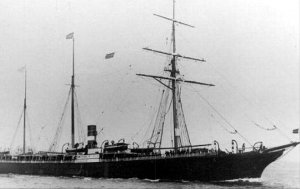

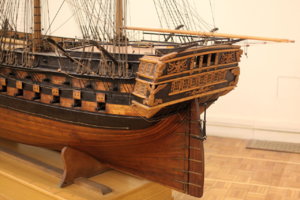
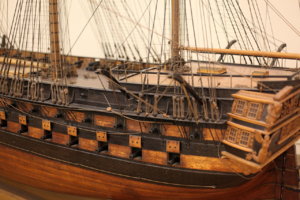
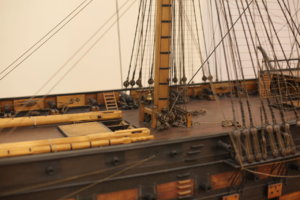
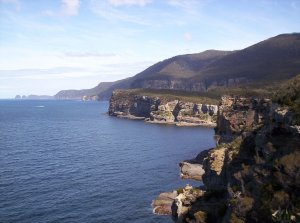
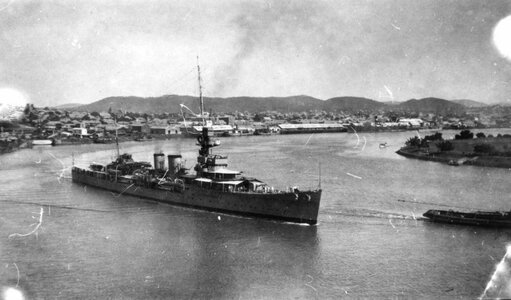
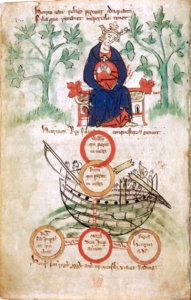

 bulletins of casualties and damage were sold all over England – a novelty at that time. The
bulletins of casualties and damage were sold all over England – a novelty at that time. The 